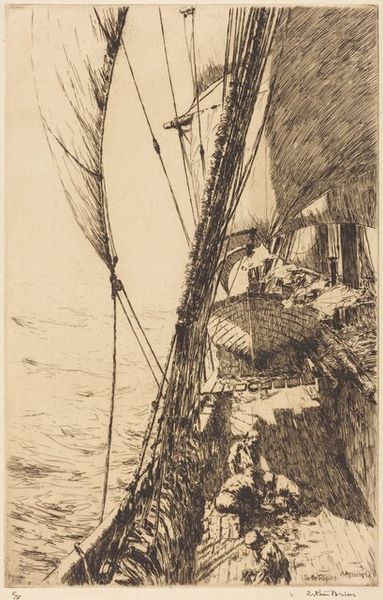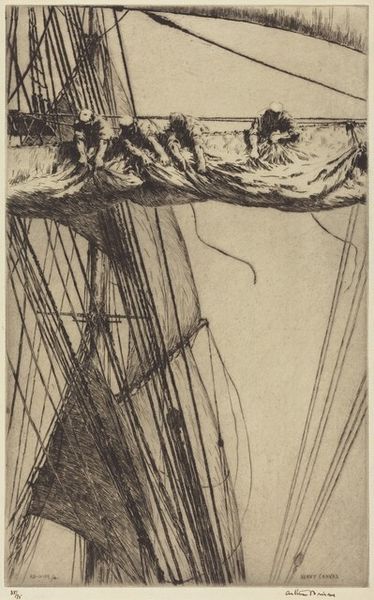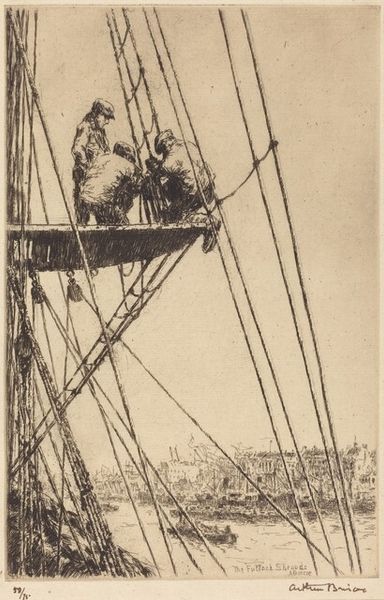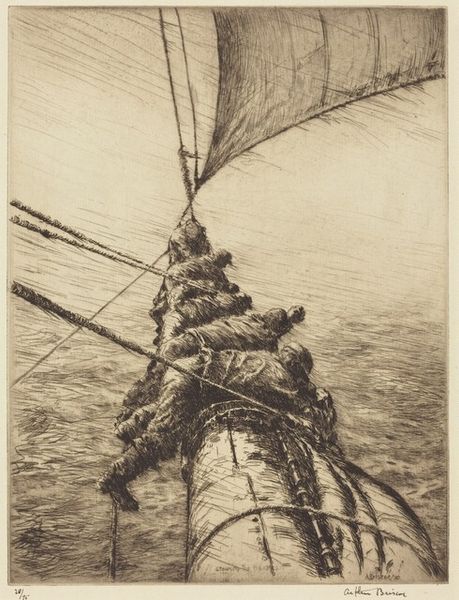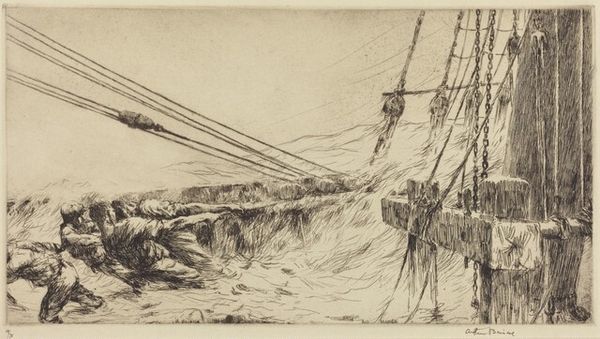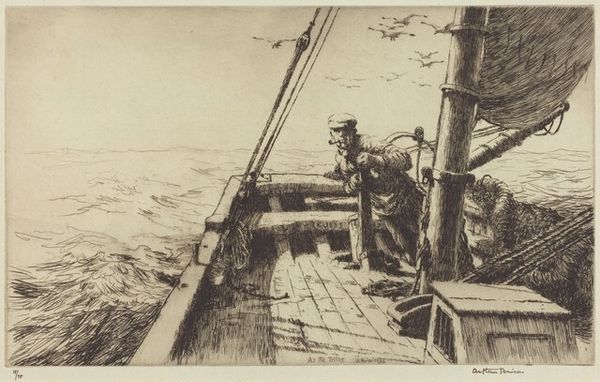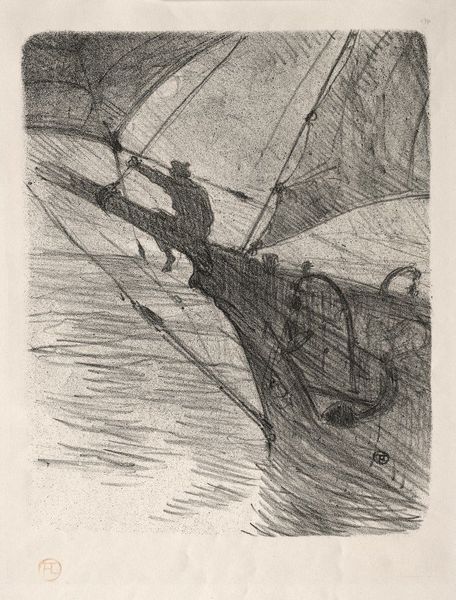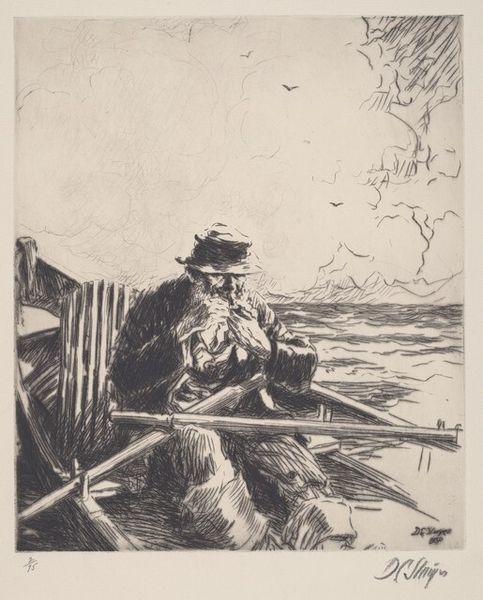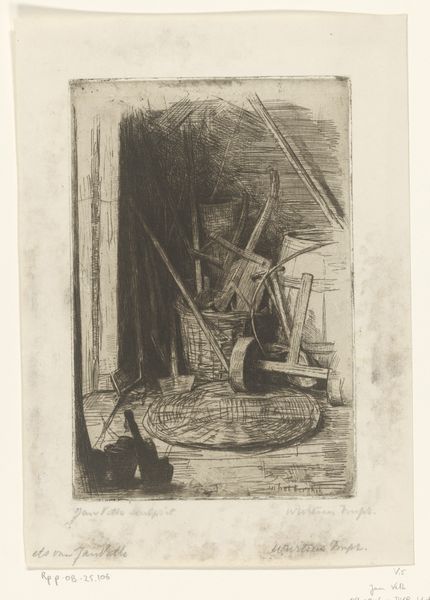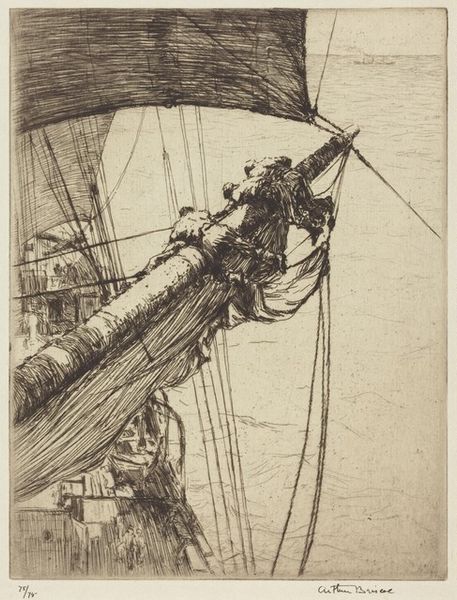
print, etching
#
narrative-art
# print
#
etching
#
figuration
#
genre-painting
#
realism
Copyright: National Gallery of Art: CC0 1.0
Editor: Here we have Arthur Briscoe’s etching, "Manning the Pumps," from 1931. The churning lines really convey the effort and energy of the figures, but beyond that, I am curious…what stands out to you? Curator: The image draws attention to labor, doesn't it? Etchings, as a medium, allowed for wider distribution and therefore had the potential to depict and reach the working classes. This print aestheticizes the toil and process inherent in maritime work. Note how Briscoe has given great attention to the specific textures, materials, and operational apparatus of a sailing vessel. How does focusing on labor shift our understanding of maritime activity? Editor: That's interesting. So it's not just a pretty picture of a ship, but a depiction of the hard work that keeps it afloat? Curator: Precisely! Consider also the date, 1931. The world was in the throes of economic depression. How might this depiction of strenuous manual labor have resonated with audiences at that time? Were such depictions common or challenging? Was it celebrating work, documenting a struggle, or something else entirely? Editor: I never considered that, the social context. So, the value of the print is less in its artistic beauty, but in what it tells us about the working class experience and how that image circulated during a very specific and challenging moment. Curator: Exactly. It makes you question, who was Briscoe making this for, and what was he trying to communicate about maritime labor? How were prints and other reproduced imagery used to build solidarity? Think about it – art as a material force within a culture. Editor: Okay, I definitely see that differently now. Thinking about the material and the medium and how it communicates about the reality of maritime work shifts the way you experience the art. Curator: Right? It’s about understanding the system within which art is produced and consumed.
Comments
No comments
Be the first to comment and join the conversation on the ultimate creative platform.
